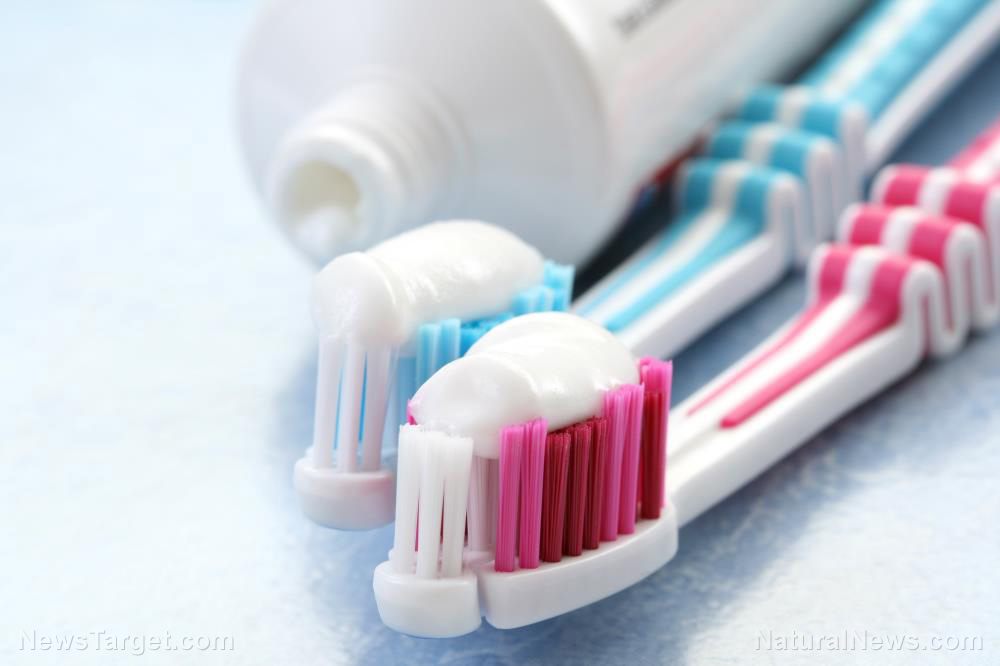CDC warns against too much fluoride in kids’ toothpaste, but says nothing about the issue of fluoridated water
04/19/2022 / By JD Heyes

The Centers for Disease Control and Prevention has issued a new warning about kids getting too much fluoride exposure in their toothpaste, but for some reason, the government health agency remained silent about similarly negative exposure to kids (and adults) from fluoridated water.
According to the Defender, the news outlet for the Children’s Health Defense organization, the CDC said that 40 percent of kids between the ages of three and six utilized potentially dangerous amounts of toothpaste, adding that at present, the agency, along with the American Dental Association, only recommend using no more than a pea-sized dollop for kids in that age group. Both also recommend no more than the size of a grain of rice on their toothbrushes for children younger than three.
The issue with using too much toothpaste relates to the amount of fluoride it contains, the Defender noted. Consumers who examine the labels of toothpaste brands that contain fluoride will see a warning that says, “If you accidentally swallow more than used for brushing, seek professional help or contact a poison control center immediately.”
The warning was mandated by the Food and Drug Administration for all fluoride-containing dental products beginning in April 1997, the outlet reported, adding: “Ironically, while swallowing toothpaste is recognized as a cause for concern, we’re supposed to believe that drinking fluoridated water in any quantity is not only safe but beneficial for our teeth. The fact of the matter is that fluoride is a toxic substance with no known biological imperative. Researchers have even questioned its efficacy as a topical anticaries prophylactic.”
The outlet noted further that dental caries are the result of the demineralization of teeth by acids that stem from bacterial fermentation of dietary sugars. The demineralization is then countered by minerals contained in saliva, but the re-mineralization process occurs slowly, and fluoride helps prevent dental caries by enhancing the remineralization process.
But the problem is that teeth don’t really have to rely on fluoride in order to re-mineralize, the Defender noted, pointing out that previous research has found that the fluoride protective shield formed on teeth is actually as much as 100 times thinner than previously believed.
“It has long been believed that fluoride changes the main mineral in tooth enamel, hydroxyapatite, into a more-decay resistant material called fluorapatite,” the Defender noted, though researchers have discovered that the fluorapatite layer formed in that manner is just six nanometers in thickness, which means it would take some 10,000 such layers to comprise the width of a human hair.
The authors of the aforementioned study said that “it has to be asked whether such narrow … layers really can act as protective layers for the enamel.”
Fluoride ingestion has long been known to cause health issues. As far back as 2009, Natural News reported: “Critics say that the safety and effectiveness of fluoride has never been fully proven, and that it can actually be dangerous to consume with resulting health consequences such as neurotoxicity, cancer, and fluorosis among others.
“Studies done on mice have shown varying levels of neurotoxicity when these mice were exposed to fluoride. The first major study that showed fluoride caused neurotoxicity was done in 1995 by Dr. Phyllis Mullenix on mice. All the previous theories about fluoride that the researchers were working from were proved incorrect as the research went on.”
Now, the CDC is coming out with new warnings about toothpaste — but not fluoridated water.
“Brushing with too much toothpaste can damage enamel, as children could swallow too much fluoride while their teeth are developing, the CDC says. This can cause dental fluorosis, white marks and discoloration of teeth,” the Chicago Sun-Times reported.
Dental fluorosis, however, is just one unhealthy side-effect. There is evidence indicating that fluoride is an endocrine disruptor that can have ill effects on bones, the brain, the thyroid gland, the pineal gland and even blood sugar levels.
Sources include:
Submit a correction >>
Tagged Under:
American Dental Association, brain damage, brain health, CDC, children's health, clean water, dental health, dentistry, Fluoridated Water, Fluoride, fluoride toxicity, neurotoxicity, oral health, products, tap water, toxic ingredients
This article may contain statements that reflect the opinion of the author
RECENT NEWS & ARTICLES
COPYRIGHT © 2017 INGREDIENTS NEWS


















